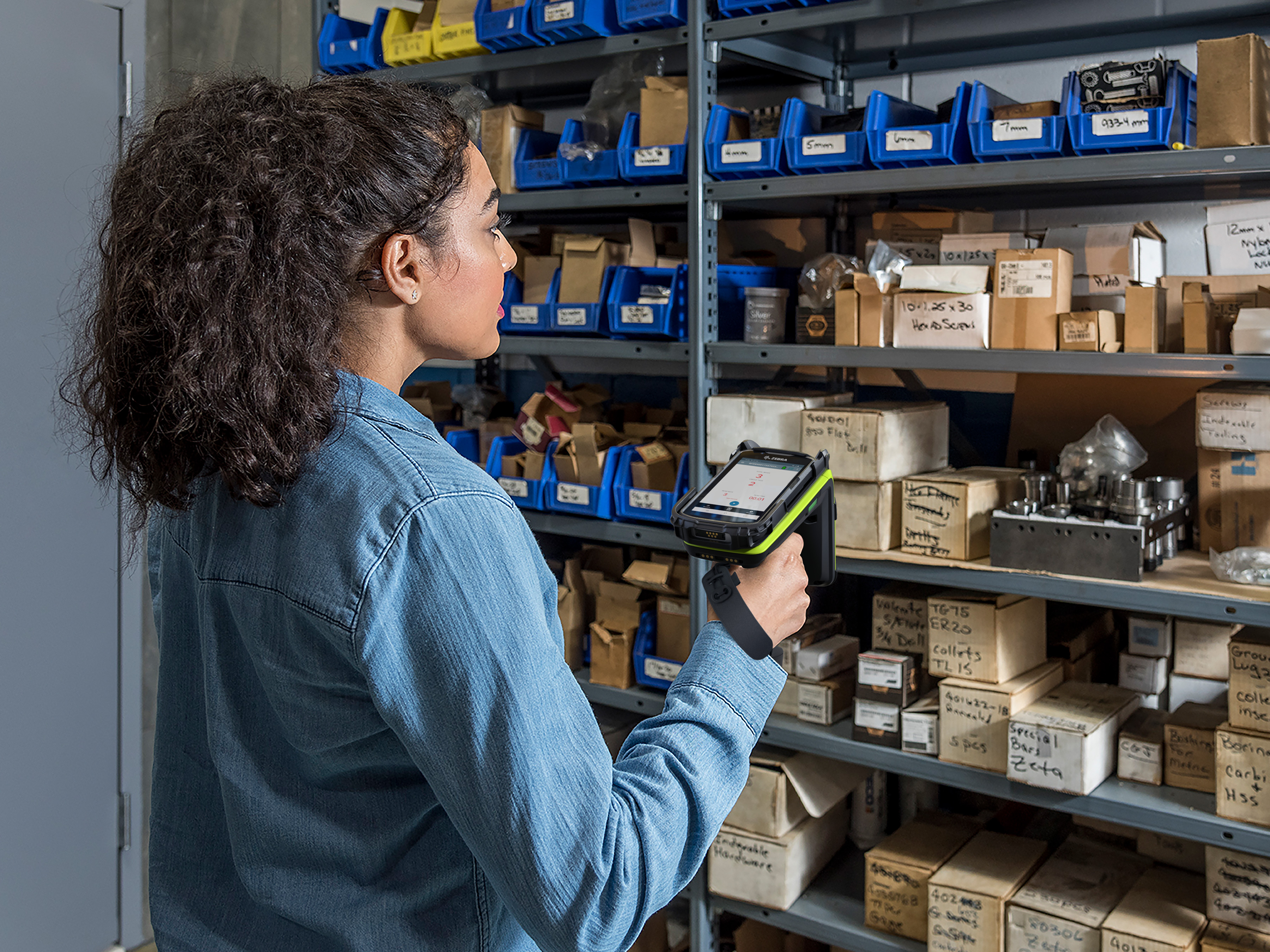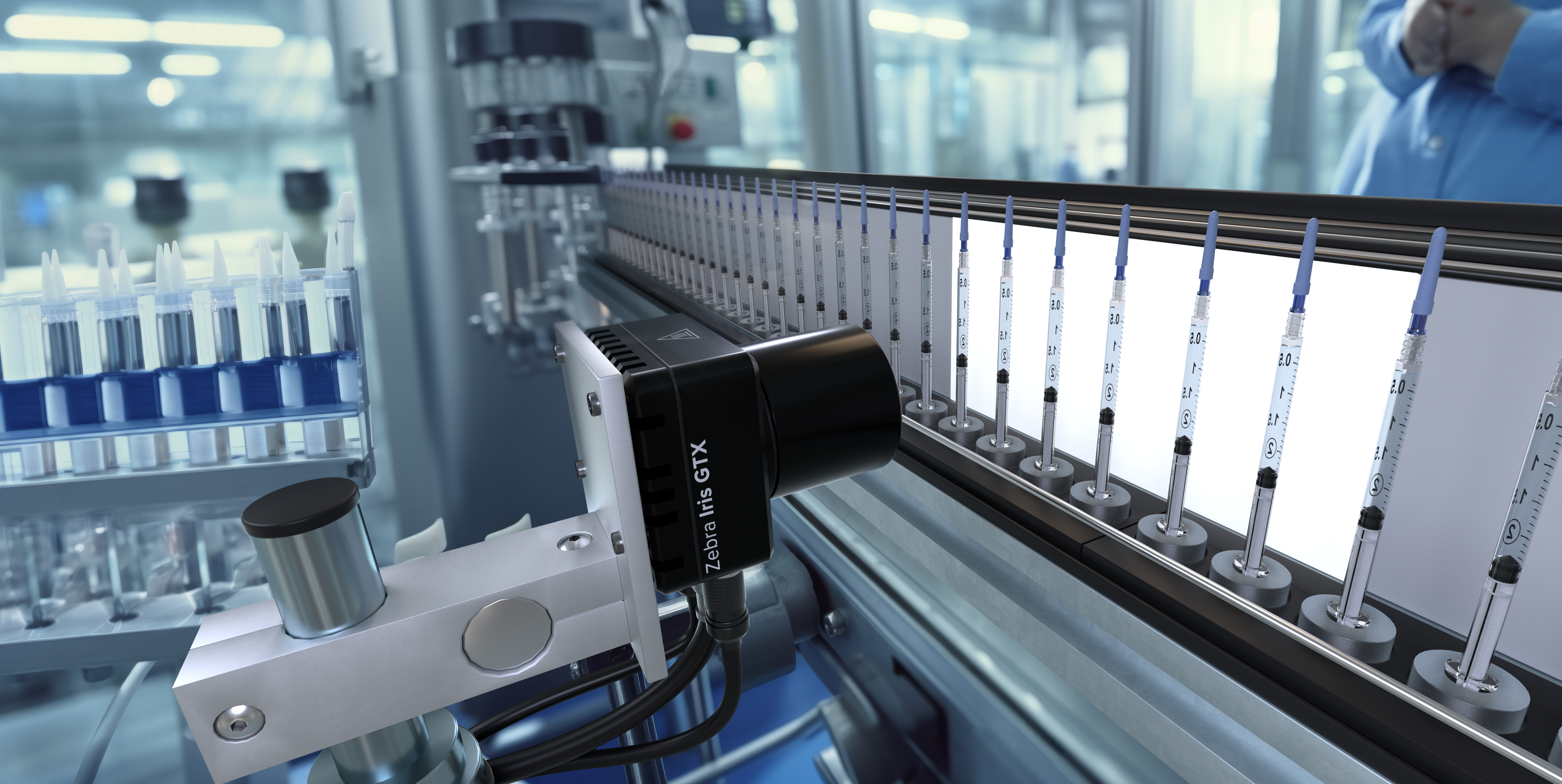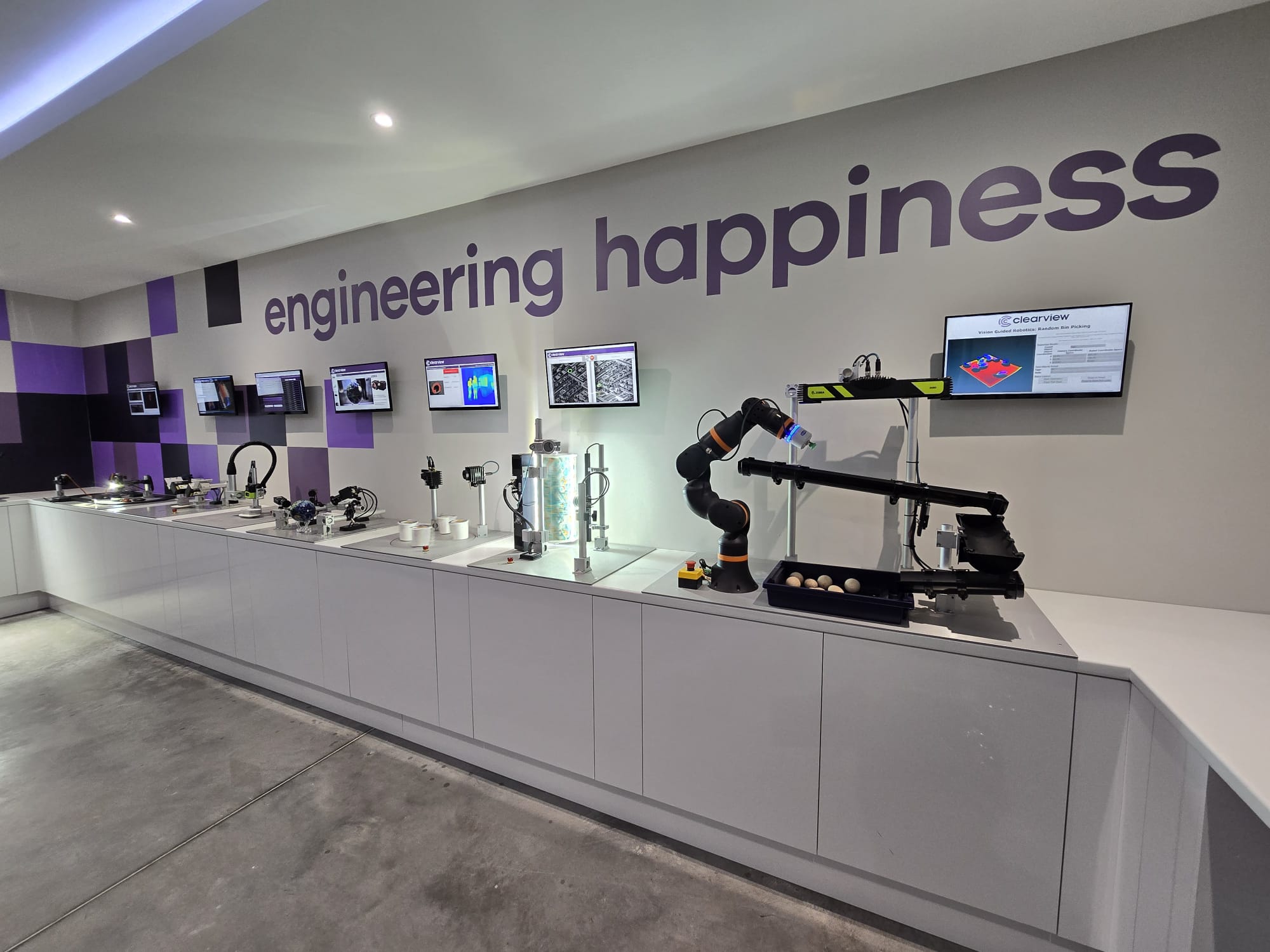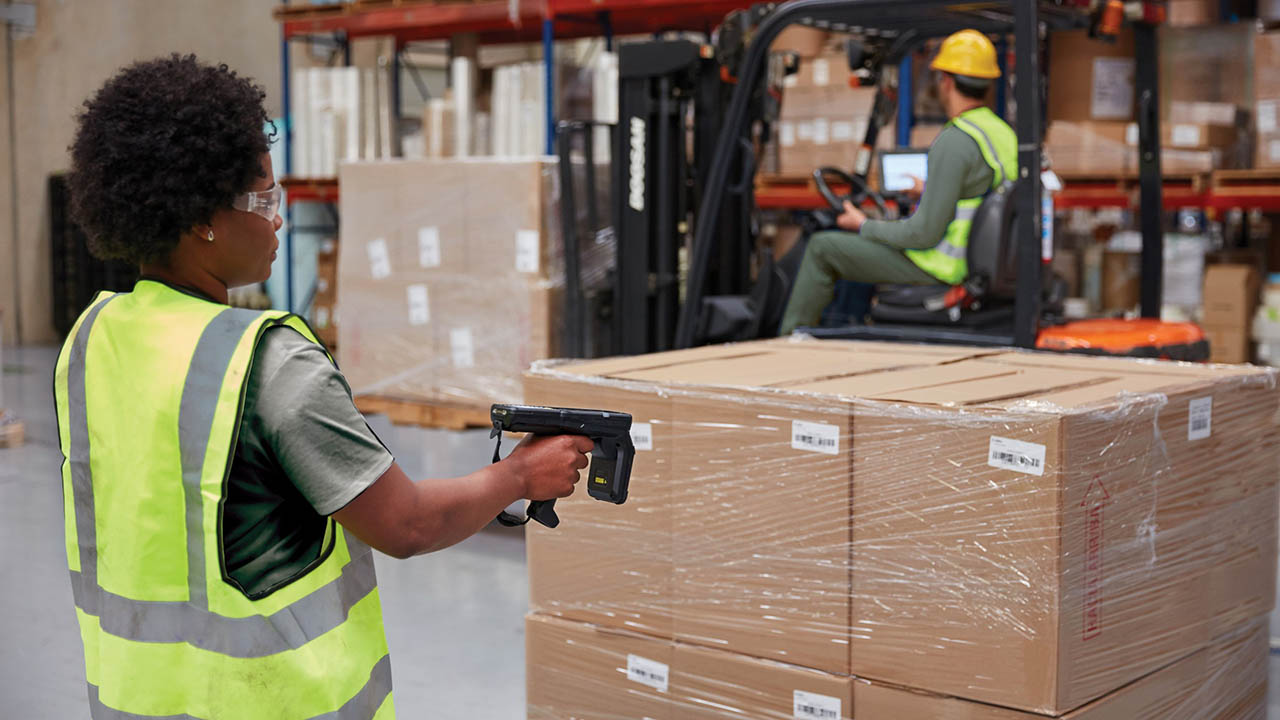Transform retail operations with Zebra’s retail technology solutions, featuring hardware and software for improving inventory management and empowering teams.
Streamline operations with Zebra’s healthcare technology solutions, featuring hardware and software to improve staff collaboration and optimize workflows.
Enhance processes with Zebra’s manufacturing technology solutions, featuring hardware and software for automation, data analysis, and factory connectivity.
Zebra’s transportation and logistics technology solutions feature hardware and software for enhancing route planning, visibility, and automating processes.
Learn how Zebra's public sector technology solutions empower state and local governments to improve efficiency with asset tracking and data capture devices.
Zebra's hospitality technology solutions equip your hotel and restaurant staff to deliver superior customer and guest service through inventory tracking and more.
Zebra's market-leading solutions and products improve customer satisfaction with a lower cost per interaction by keeping service representatives connected with colleagues, customers, management and the tools they use to satisfy customers across the supply chain.
Empower your field workers with purpose-driven mobile technology solutions to help them capture and share critical data in any environment.
Zebra's range of Banking technology solutions enables banks to minimize costs and to increase revenue throughout their branch network. Learn more.
Zebra's range of mobile computers equip your workforce with the devices they need from handhelds and tablets to wearables and vehicle-mounted computers.
Zebra's desktop, mobile, industrial, and portable printers for barcode labels, receipts, RFID tags and cards give you smarter ways to track and manage assets.
Zebra's 1D and 2D corded and cordless barcode scanners anticipate any scanning challenge in a variety of environments, whether retail, healthcare, T&L or manufacturing.
Zebra's extensive range of RAIN RFID readers, antennas, and printers give you consistent and accurate tracking.
Choose Zebra's reliable barcode, RFID and card supplies carefully selected to ensure high performance, print quality, durability and readability.
Zebra's location technologies provide real-time tracking for your organization to better manage and optimize your critical assets and create more efficient workflows.
Zebra's rugged tablets and 2-in-1 laptops are thin and lightweight, yet rugged to work wherever you do on familiar and easy-to-use Windows or Android OS.
With Zebra's family of fixed industrial scanners and machine vision technologies, you can tailor your solutions to your environment and applications.
Zebra’s line of kiosks can meet any self-service or digital signage need, from checking prices and stock on an in-aisle store kiosk to fully-featured kiosks that can be deployed on the wall, counter, desktop or floor in a retail store, hotel, airport check-in gate, physician’s office, local government office and more.
Adapt to market shifts, enhance worker productivity and secure long-term growth with AMRs. Deploy, redeploy and optimize autonomous mobile robots with ease.
Discover Zebra’s range of accessories from chargers, communication cables to cases to help you customize your mobile device for optimal efficiency.
Zebra's environmental sensors monitor temperature-sensitive products, offering data insights on environmental conditions across industry applications.
Enhance frontline operations with Zebra’s AI software solutions, which optimize workflows, streamline processes, and simplify tasks for improved business outcomes.
Zebra Workcloud, enterprise software solutions boost efficiency, cut costs, improve inventory management, simplify communication and optimize resources.
Keep labor costs low, your talent happy and your organization compliant. Create an agile operation that can navigate unexpected schedule changes and customer demand to drive sales, satisfy customers and improve your bottom line.
Drive successful enterprise collaboration with prioritized task notifications and improved communication capabilities for easier team collaboration.
Get full visibility of your inventory and automatically pinpoint leaks across all channels.
Reduce uncertainty when you anticipate market volatility. Predict, plan and stay agile to align inventory with shifting demand.
Drive down costs while driving up employee, security, and network performance with software designed to enhance Zebra's wireless infrastructure and mobile solutions.
Explore Zebra’s printer software to integrate, manage and monitor printers easily, maximizing IT resources and minimizing down time.
Make the most of every stage of your scanning journey from deployment to optimization. Zebra's barcode scanner software lets you keep devices current and adapt them to your business needs for a stronger ROI across the full lifecycle.
RFID development, demonstration and production software and utilities help you build and manage your RFID deployments more efficiently.
RFID development, demonstration and production software and utilities help you build and manage your RFID deployments more efficiently.
Zebra DNA is the industry’s broadest suite of enterprise software that delivers an ideal experience for all during the entire lifetime of every Zebra device.
Advance your digital transformation and execute your strategic plans with the help of the right location and tracking technology.
Boost warehouse and manufacturing operations with Symmetry, an AMR software for fleet management of Autonomous Mobile Robots and streamlined automation workflows.
The Zebra Aurora suite of machine vision software enables users to solve their track-and-trace, vision inspection and industrial automation needs.
Zebra Aurora Focus brings a new level of simplicity to controlling enterprise-wide manufacturing and logistics automation solutions. With this powerful interface, it’s easy to set up, deploy and run Zebra’s Fixed Industrial Scanners and Machine Vision Smart Cameras, eliminating the need for different tools and reducing training and deployment time.
Aurora Imaging Library™, formerly Matrox Imaging Library, machine-vision software development kit (SDK) has a deep collection of tools for image capture, processing, analysis, annotation, display, and archiving. Code-level customization starts here.
Aurora Design Assistant™, formerly Matrox Design Assistant, integrated development environment (IDE) is a flowchart-based platform for building machine vision applications, with templates to speed up development and bring solutions online quicker.
Designed for experienced programmers proficient in vision applications, Aurora Vision Library provides the same sophisticated functionality as our Aurora Vision Studio software but presented in programming language.
Aurora Vision Studio, an image processing software for machine & computer vision engineers, allows quick creation, integration & monitoring of powerful OEM vision applications.
Adding innovative tech is critical to your success, but it can be complex and disruptive. Professional Services help you accelerate adoption, and maximize productivity without affecting your workflows, business processes and finances.
Zebra's Managed Service delivers worry-free device management to ensure ultimate uptime for your Zebra Mobile Computers and Printers via dedicated experts.
Find ways you can contact Zebra Technologies’ Support, including Email and Chat, ask a technical question or initiate a Repair Request.
Zebra's Circular Economy Program helps you manage today’s challenges and plan for tomorrow with smart solutions that are good for your budget and the environment.
The Zebra Knowledge Center provides learning expertise that can be tailored to meet the specific needs of your environment.
Zebra has a wide variety of courses to train you and your staff, ranging from scheduled sessions to remote offerings as well as custom tailored to your specific needs.
Build your reputation with Zebra's certification offerings. Zebra offers a variety of options that can help you progress your career path forward.
Build your reputation with Zebra's certification offerings. Zebra offers a variety of options that can help you progress your career path forward.

Is It Really Possible for Consumer Packaged Goods (CPG) Companies and Retailers to Predict – and Plan for – Future Demand?
There’s both an art and a science to forecasting, especially when trying to achieve the “right” level of inventory. That’s why you need both people and AIs contributing to your fact-gathering and decision-making.
In a world where precision and preparedness are paramount, forecasting stands as the heartbeat of decision-making. From predicting the metrics of a patient in an intensive care unit at a hospital to predicting the undulating rhythms of the economy on a local or global scale, forecasting is the underlying science that enables us to see and plan the future. It’s a technique based on statistical and machine learning algorithms that learns the patterns and relations from past and present data to give us an idea of what might happen next. How good a forecast will be will depend on both the quality of the data and algorithms used. However, the premise is that we can set future expectations based on historical and current events and behaviors.
This takes me back to my original question: What is forecasting?
We understand that we should forecast, and we have a general idea about how to arrive at a forecast, but why should we commit so much time to this exercise? It will never definitively reveal the future. It’s still a caveated expectation. So, why forecast? What does a forecast do for us individually or collectively as people? Why is it so important that we work diligently to get our forecasts “right”? Why is there such a negative impact when we don’t?
Here’s my take (though I’d love to hear yours, too):
Forecasting is at the epicenter of the most critical outcomes that touch the essence of human existence – outcomes derived from a series of decisions made by those in retail, manufacturing, healthcare, and government alongside their supply chain partners. Therefore, forecasting is not just a tool but a guiding light, illuminating the path from uncertainty to clarity, from chaos to control.
For retailers and consumer packaged goods (CPG) companies, it has also become their backbone. That’s because forecasting is the linchpin that holds together the complex machinery of supply and demand.
It’s a meticulous orchestration of numbers and predictions, where a single misstep can lead to cascading effects – from stockpiles of unsold goods to the echo of empty shelves.
If you’re a retailer or consumer goods manufacturer, I know you don't just care about forecasting; you live by it. It dictates your strategies, informs your decisions, and ultimately shapes your success in a landscape where a day's delay, a misjudged trend, or an unanticipated demand can mean the difference between soaring profits and staggering losses.
And I’m sure you’ve come to realize that forecasting in retail and CPG is not a siloed function; it's a collaborative effort involving multiple stakeholders. From the procurement team assessing raw material needs to the marketing department planning promotional campaigns, accurate forecasts help ensure that all departments’ efforts are synchronized and strategically aligned. This alignment is crucial in an era where consumers expect personalized experiences and rapid fulfillment.
That’s because demand planning, the process of forecasting future customer demand, hinges critically on accurate forecasting, serving as its foundation.
Why Demand Planning Can’t Happen without Accurate Forecasting – and How to Get an Accurate Forecast
At its core, forecasting is the key ingredient in demand planning, acting as the predictive mechanism that feeds into the broader demand planning process and serving as an integral component of effective supply chain management.
It is through forecasting that demand planners can anticipate and adjust for shifts in behavior, whether that’s through inventory level optimization or labor allocation. This rightsizing helps both manufacturers and retailers reduce costs and increase profitability, as they can avoid overstocks (and waste) as well as shortages (and missed opportunities). Additionally, accurate demand forecasting contributes to environmental sustainability by preventing overproduction, which helps reduce waste and conserve limited resources.
In fact, much like other forecasting efforts, the demand planning process starts with the collection and analysis of historical data. The main difference with demand planning is that forecasts are based upon historical sales, promotion data, event data, and any other relevant information that can impact demand.
Once key data is aggregated, it’s then fed into sophisticated forecasting models, which often utilize advanced statistical methods and machine learning, a type of artificial intelligence (AI), to identify patterns and correlations in the data. It’s these patterns and correlations that enable you to predict future demand with a high degree of accuracy. The forecasted demand then forms the basis for various strategic and operational decisions, such as production scheduling, inventory management, and procurement planning.
Challenges of Accurate Forecasting (and Demand Planning) in Retail and CPG
I probably don’t have to tell you that the dynamic nature of consumer behavior and market trends can make it feel impossible to get an accurate forecast. I’m also aware of how difficult demand planning has become since the start of the pandemic. You just never know what you don’t know.
However, there are some consistencies that we can account for no matter what, one of them being demand inconsistencies.
I have no doubt that one of the primary hurdles you’re facing right now is ever-shifting consumer preference which can change rapidly due to various factors such as emerging cultural trends, socio-economic shifts, and global conflicts. Knowing this volatility makes it difficult for you to predict future demand with precision given that past data might not always be a reliable indicator of future patterns, you need to find ways to account for the consistent inconsistencies. That’s where advanced analytical and AI techniques can prove quite effective.
For example, by leveraging advanced AI and machine learning algorithms, you can dynamically adjust your forecasting models to account for real-time data and emerging trends, enhancing the accuracy of future demand predictions. These technologies enable the identification of subtle patterns and correlations within vast datasets that human analysts might overlook, allowing for the anticipation of shifts in consumer behavior before they become apparent. By incorporating AI and machine learning, you can both navigate and capitalize on the fluid landscape of consumer preferences, ensuring you remain competitive in a rapidly evolving market.
I know another significant challenge you’re probably facing is the complexity of managing a vast array of products, each with its own lifecycle and demand curve. You may be handling thousands of stock-keeping units (SKUs) and forecasting for each one requires a deep understanding of its unique demand pattern. Seasonality of course adds another layer of complexity, with certain products seeing spikes in demand during specific times of the year. (Though even that demand level can fluctuate from year to year depending on what’s happening in the world, leaving you rushing to either restock shelves or deal with dead inventory.)
That’s why a highly nuanced approach to forecasting is necessary.
Now, before you worry that such an approach is too resource-intensive and difficult to scale, let me note that there are now advanced AI algorithms capable of scaling to large volumes of data by leveraging graphics processing units (GPUs) and/or distributed computing. GPUs have revolutionized the field of AI and machine learning by providing the computational power necessary to process and analyze large datasets at speeds significantly faster than traditional central processing units (CPUs). This capability allows for the training of complex AI models on extensive data sets in a fraction of the time, making scalable, real-time analysis not just feasible but also cost-effective.
While leveraging GPUs represents one method for scaling model training, distributed processing offers an alternative approach. This strategy involves utilizing a network of machines, rather than a single unit, to train models. By distributing tasks across several machines, distributed computing significantly improves the system's capacity to simultaneously manage and analyze large volumes of data.
In Other Words
The increasing expectation for personalized consumer experiences and rapid fulfillment has raised the stakes for accurate forecasting, no matter where you are in the supply chain or what you’re ultimately delivering in your supply chain (i.e., groceries, apparel, pharmaceuticals, etc.). Consumers today expect every product technically “on the market” to be available when, where, and how they want them, leading to the need for more localized and exhaustive forecasting. This requires you to have a sophisticated and world-class data infrastructure capable of processing and analyzing large volumes of data at a granular level. It may take several months and an engineering skillset to set up a robust and reliable data infrastructure to enable machine learning forecasting. However, such investment and effort have become necessary as the need for agility and flexibility in forecasting processes is paramount.
You are always going to be challenged by changes in regulatory environments and competition. And no matter how hard you try to mitigate supply chain disruptions, there’s always a risk of a storm or other natural disaster that can delay or stop deliveries right at a time when demand spikes.
So, whether you’re a CPG or retailer (or otherwise responsible for goods production or distribution/sale), let’s talk about how we can get you set up with the AI-powered solutions you need to anticipate and adjust for the future. I realize the endeavor may be complex, but you won’t have to take it on alone. Plus, once you’ve got your systems set up and your algorithms well trained, your demand planners – your decision makers – will be better informed. They’ll have forecasts that more accurately account for evolving consumer behavior and expectations, and that can make a real difference when your goal is to better serve your customers (which better serves your bottom line).
Let me and my colleagues know when you want to talk.
###
Related Reads
Zebra Developer Blog
Zebra Developer BlogZebra Developer Blog
Are you a Zebra Developer? Find more technical discussions on our Developer Portal blog.
Zebra Story Hub
Zebra Story HubZebra Story Hub
Looking for more expert insights? Visit the Zebra Story Hub for more interviews, news, and industry trend analysis.
Search the Blog
Search the BlogSearch the Blog
Use the below link to search all of our blog posts.
Most Recent
Legal Terms of Use Privacy Policy Supply Chain Transparency
ZEBRA and the stylized Zebra head are trademarks of Zebra Technologies Corp., registered in many jurisdictions worldwide. All other trademarks are the property of their respective owners. ©2025 Zebra Technologies Corp. and/or its affiliates.






